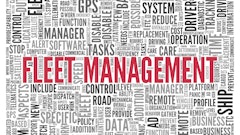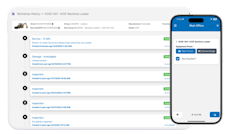
Rental rates are an interesting topic. And probably one of the most important financial metrics associated with the rental business.
Here's what we know about rental rates:
Rental rates are based on the original equipment cost of rental units. We will cover move on this topic a little later.
We know they move around a bit because of seasonality, economic downturns or upswings, rates for special customers, salesman discounts and especially because “they can get it cheaper from ABC Rental."
Rental rates normally are stated in terms of daily, weekly and monthly rates, with commissions based on a percentage of the standard rate collected. Some rental companies pro-rate their rates. Some bill up-front and others at the conclusion of the rental cycle.
We know rental rates are used to pay our sales personnel in terms of monthly, quarterly and annual commissions and bonuses. Competitive compensation plans help retain experienced sales folks.
Put this all together and rental rates have to cover both the cost to own (which includes debt service) and the cost to operate the rental units, along with indirect expenses related to payroll and benefits, occupancy costs, general and administration expenses and taxes. Remember, a positive bottom line does not guarantee adequate cash flow to cover debt service.
Readers can review direct, indirect and general administrative expenses in the American Rental Association’s Cost of Doing Business publication which is due out in 2017. Speaking from personal experience I can assure you that comparing your numbers to the ARA numbers is an excellent exercise to undertake. The ARA also produces a rental metrics paper that is a great refresher on how rental metrics are calculated. You might wish to obtain a copy.
Listen to KeyBank
KeyBank tracks the rental Industry (especially the public companies) and publishes a rental Industry paper a couple of times a year. Looking at it from their perspective, investment bankers are more interested in the investment grade of a rental company or the rental industry in general. I find it interesting reading, especially when they come to conclusions about why the value of rental equipment is changing, why rental billing is up or down, changes in rental rates, expected CAPEX expenditures and commentary about the various OEMs that service the industry. In the end, KeyBank supplies additional data, and some deep data you can use to see how you are doing.
Joe Box heads up the KeyBank effort and you can find him at [email protected]. I suggest you get on their list to receive their market analysis.
Joe Box likes to share their efforts of tracking industry volume, used equipment prices and rental rates. KeyBank concluded that rental rates move with used equipment values. Their charts seem to support their conclusion, but there might be other market changes coming down the pike that could change this relationship.
While the KeyBank material is good, you can’t beat the quarterly data supplied to shareholders by public companies. It might be prudent to purchase a few shares of a public rental company and any directly related industries or companies that give you a heads-up about what is happening in the market. Keep in mind, however, that most of the public companies prepare data using the ARA Rental Metrics noted above, which might produce significantly different results when compared to yours.
Rates, profits and cash flow
I covered the basics surrounding rental rates and some complementary data supplied by ARA, KeyBank and others. There appears to be, however, some confusion how rental rates are analyzed to determine what role they play in rental company profits and cash flow.
I say this because when I have conversations with rental company execs and I ask “How is the rental business?” and I hear “Great, we are up 10% over last year.” Or “Not so good, we are below budget so far this year.” And then I say “How come?” and I hear comments about both the time and dollar utilization, which is expected. I then come back with “Why did your total utilization and dollar utilization move the way they did?” and usually get a reasonable explanation about total utilization. But seldom do I get an explanation about dollar utilization that covers both total utilization movement as well as rental rate changes, which in combination contribute to changes on dollar utilization.
I have been involved with some analysis along these lines with a company thinking they were giving their stuff away, but found their actual rates were somewhere in between 85-87% of their standard rate. That’s good enough for me as long as their standard rate is close to market rates for their territory. But if the standard rate is below market they might, in fact, be giving their equipment away.
One good way to track how you are doing is measuring your ROI against your fleet cost by unit, Category Class and the overall fleet, which you can compare to both the ARA stats and KeyBank stats to see where you stand. We know that public companies have to make a buck and hit their numbers. Guess what, so do you. If you are not it will show up in your checkbook balance, or lack of one.
When it comes to rental rates you have to get it right to cover both the Cost to Own and the Cost to Operate your fleet. Now go back and ask your rental manager why the dollar utilization changed last month… if you hear crickets for any length of time, it's time to get hold of the ARA Rental Metrics to learn how to calculate the impact of rental rate changes on rental volume.
The rental industry is an amazing industry, with it’s own set of financial metrics. That’s what makes it so much fun to play with.


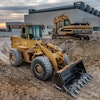




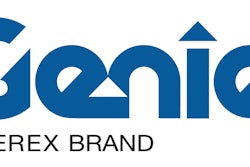


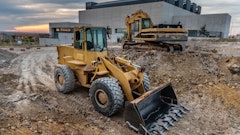



![Herc 5745c08a34274 1 65ce4101dd187[1]](https://img.forconstructionpros.com/mindful/acbm/workspaces/default/uploads/2025/06/herc5745c08a34274-1-65ce4101dd1871.UqeKvSiS04.png?ar=16%3A9&auto=format%2Ccompress&bg=fff&fill-color=fff&fit=fill&h=135&q=70&w=240)
